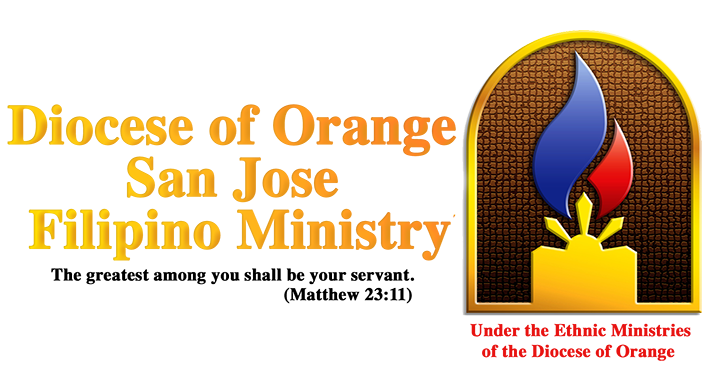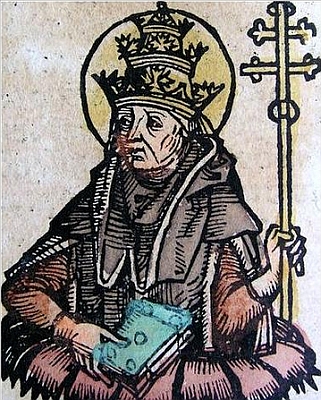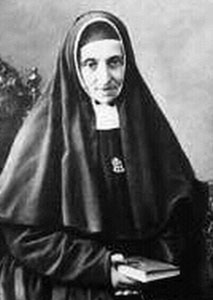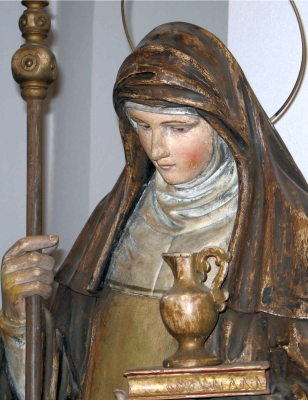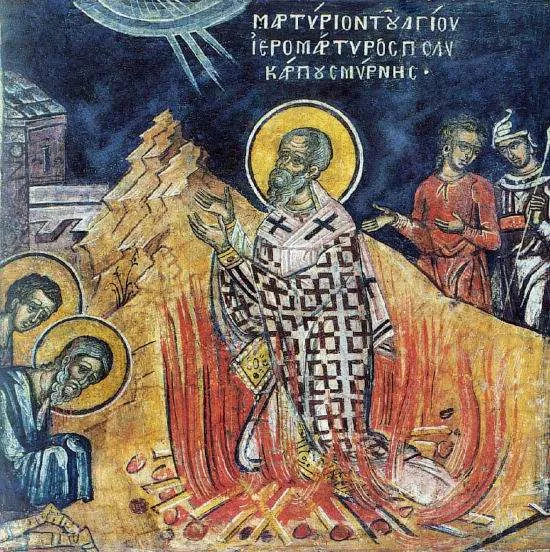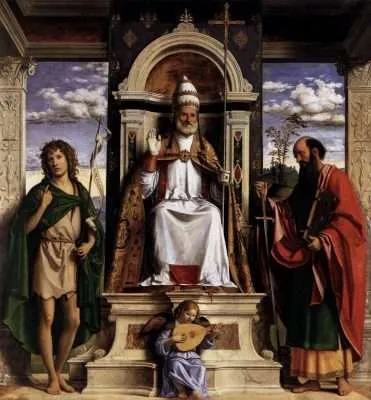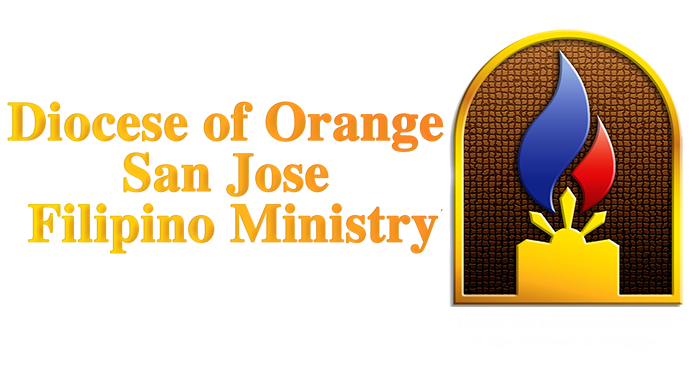Saint Katharine Drexel, Virgin
1858–1955; Patron Saint of racial justice and philanthropists; Canonized on October 1, 2000 by Pope John Paul II
On November 26, 1858, Catherine Marie Drexel was born in Philadelphia to Hannah Langstroth Drexel and her husband, Francis Drexel, an international banker and one of the wealthiest men in the United States. Her mother died when Catherine was only five weeks old, so Catherine and her older sister Elizabeth were cared for by their aunt and uncle until their father remarried in 1860. Three years later, Francis and his new wife, Emma, had a daughter, Louisa.
The three girls had what many would describe as an ideal childhood. They were lovingly cared for, lived in a large home in Philadelphia, received an excellent education from private tutors, frequently traveled with their father and stepmother throughout the United States and Europe, and were taught the Catholic faith in both word and deed. Francis and Emma Drexel were devout Catholics who regularly prayed and performed charitable works. They taught the girls that their wealth was a gift to be used for the good of others. One way they put this conviction into practice was by opening their large home to the community a few times each week, distributing food, clothing, and money for rent assistance to the poor. When widows or single women were embarrassed to come, Emma would quietly seek the women out to assist them. She often taught the girls that “Kindness may be unkind if it leaves a sting behind.” The girls also learned about prayer by witnessing their father and stepmother praying daily before an altar in their home.
When Catherine was only fourteen years old, she formulated a spiritual plan for her life with the help of her spiritual director, Father James O’Connor, who later was named the first bishop of Omaha. Catherine’s parents’ witness greatly influenced her, and she began to understand that spiritual riches were worth more than all the material wealth in the world.
After completing her formal education at the age of twenty, Catherine made her social debut and was presented to Philadelphia high society, as was the custom for young wealthy women. Her heart, however, was not drawn to the life of a social elite, but to God and care for the poor. Over the next few years, Catherine’s stepmother suffered from cancer and died on January 29, 1883, at the age of forty-nine, which helped Catherine to realize that money cannot buy health or happiness. The following year, Catherine and her sisters traveled to the Western United States with their father where they saw firsthand the poverty of the Native American community on reservations. In 1885 their father died, leaving his fortune to his three girls. Francis’ will set up trust funds that stipulated that each daughter would equally receive the income produced by his remaining $14 million estate, which translated into about $1,000 every day for each daughter. By comparison, in the year 2023, the $14 million estate would be equivalent to almost $500 million, and each daughter would receive about $35,000 per day.
Despite receiving this fortune, Catherine’s heart remained with the poor, especially the Native Americans out West, and impoverished Black communities. Over the next two years, with the help of two priests, she made substantial donations to reservations and visited them herself. In 1887, she was struggling with what she would do with her life. She felt drawn to the contemplative religious life but knew that this would make it impossible for her to use her inheritance for charitable work. During a visit to Rome, she had a private audience with Pope Leo XIII during which she begged the Holy Father to send an order of missionaries to the Native Americans. The pope lovingly said to her, “But why not be a missionary yourself, my child?” The pope’s words resonated deeply within her heart, and she soon found herself in tears outside Saint Peter’s Basilica, knowing what she must do.
In 1889, Catherine entered the novitiate of the Sisters of Mercy in Pittsburgh, taking the name Sister Mary Katharine. The news traveled quickly among the social elite. Philadelphia’s Public Ledger printed an article with the headline: “Miss Drexel Enters a Catholic Convent—Gives Up Seven Million.” She made her final vows in 1891, and with thirteen companions founded the “Blessed Sacrament Sisters for Indians and Colored People.” Sister Katharine was chosen as the first superior general.
Mother Katharine quickly went to work, using her inheritance to found a boarding school for Pueblo Indians in New Mexico and a school for African American girls in Virginia. Over the next sixty-four years, Mother Katharine and her sisters established forty-nine elementary schools, twelve high schools, Xavier University in New Orleans for Black students, and fifty-one convents. At the time of her death, her order had grown to more than 500 women religious.
In 1935, following a heart attack at the age of seventy-seven, Mother Katharine retreated to a life of prayer. Her original longing for a contemplative life was realized and lasted for the next twenty years. Her father’s will was set up in such a way that the income she received from the trust fund could only be passed on to her children. If she had no children, the money was to be distributed to religious organizations that her father had specified. Of course, Mother Katharine’s order was not one of them, being founded after her father’s death. Some believe that God allowed her to live until the age of ninety-six so that her annual earnings from her trust fund could be used for the ongoing charitable work of her order. She lived her last years in prayer, in personal poverty, simplicity, and charity, giving all she had and all she was to the poor. She was canonized in the year 2000, only the second person born in the United States to be canonized up to that time (after Mother Elizabeth Ann Seton).
Many people dream of being rich. Saint Katharine Drexel teaches us that money is not the source of fulfillment in life. Love is. Whether you are rich or poor, your happiness comes from lovingly serving the will of God. Be inspired by this holy woman and learn from her example by choosing the poverty of Christ over the riches of the world, and you will discover the true riches of Heaven.
Source: https://mycatholic.life/saints/saints-of-the-liturgical-year/march-3-saint-katharine-drexel-virgin-usa-optional-memorial/
Saint Katharine Drexel, Virgin Read More »
